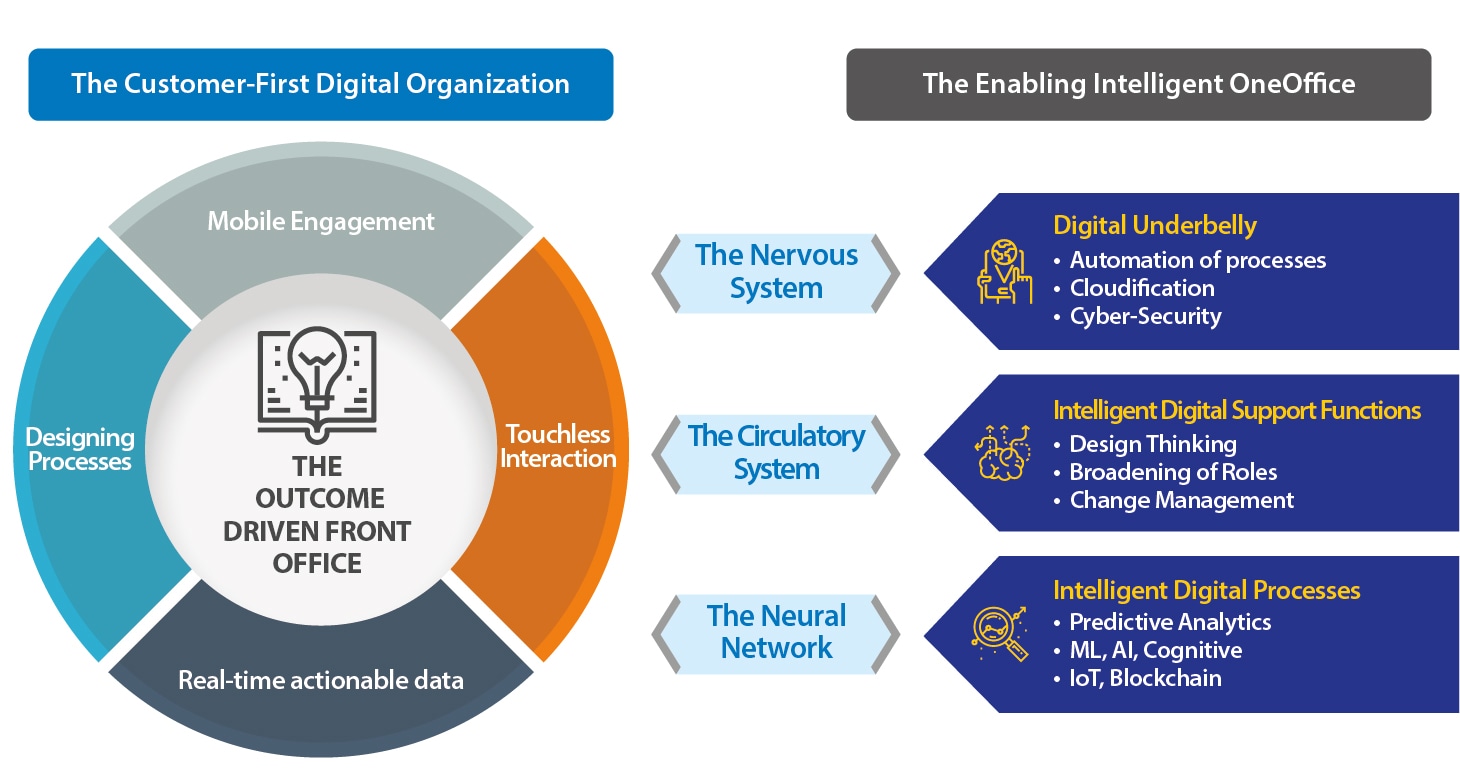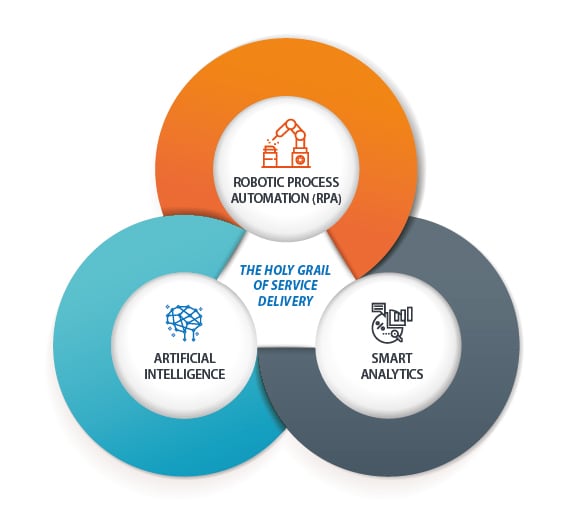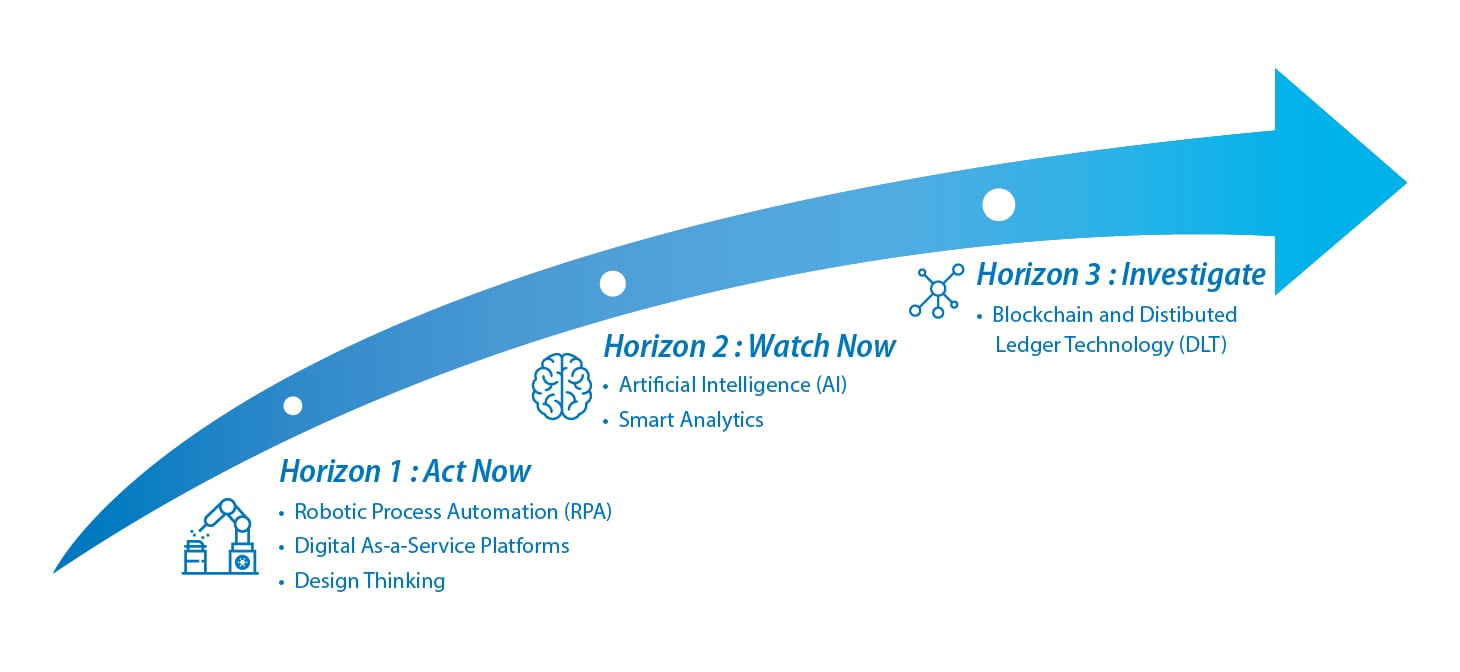Disruptions
Five Principles to Lift the Digital Fog
The success of digitalization depends on how well an organization is prepared to leverage the opportunities it brings by making the necessary change in its culture and approach. Saurabh Gupta, from HFS Research, shares his insights on how to make digital work for an organization.
We live in a world that is scary and exciting at the same time. The astounding pace of technological advancements combined with the data explosion and increasing consumerism has not only created opportunities for new sources of revenues and new business models but has also increased the threat of extinction. Our recent research across 400 enterprises suggests that nearly a third of the enterprises have seen their top 2 competitors change in just the last three years!
The global world today is Volatile, Uncertain, Complex, and Ambiguous (VUCA) – exactly how the US Military described the extreme conditions in the Afghanistan and Iraq wars. And there is a battle alright in the business world - not just for driving future success but also for survival. Digital is both an opportunity and a threat, and your future will largely be determined by how you view it. The complacent enterprises will get flattened by their more digital-savvy competitors while organizations who realize this fact and work on it manically will have a much better chance of survival and success.
Digital transformation is not about technology. In fact, nearly two-thirds of enterprises we surveyed last year view digital as creating better customer experiences, creating new revenue streams, and/or aligning business operations to customer needs. Nearly 100 C-suite executives we interviewed in another study recently said that legacy mindset and culture is the number one barrier to driving meaningful change.
I’ve outlined below five principles that enterprises must adopt to lift the digital fog:
-
Collapse the front, middle, and back office – there is only “One Office” that matters anymore. The Digital OneOffice™ (see Exhibit 1) is where the organization's people, intelligence, processes, and infrastructure come together as one integrated unit, with one set of unified business outcomes tied to exceeding customer expectations. It allows an enterprise to unify all stakeholders across the organization: the customers, partners, and employees.
Exhibit 1. The Digital OneOffice™ Framework
-
Leverage the power of AND not OR. We finally have credible change agents beyond labor arbitrage in the global services industry - design thinking, robotic automation, artificial intelligence, smart analytics, blockchain, IoT. But they must work together to solve business problems. Unfortunately, most discussions today end up becoming either a capability discussion versus a business solution discussion or a comparative discussion versus integrative discussion. To create real and meaningful impact, these change agents need to converge. For instance, smart analytics are increasingly reliant on AI tools such as NLP to conduct search-driven analytics, neural networks to do data exploration, and learning algorithms to build predictive models. In fact, the Holy Grail of service delivery transformation is at the intersection of these change agents (See Exhibit 2)
Exhibit 2. The Triple-A Trifecta of Automation, Smart Analytics, and Artificial Intelligence
-
Develop and execute a strategy across three-horizons. When designing your transformation roadmap, it is essential to think through three horizons to be future-proof (See Exhibit 3). Adopt and industrialize horizon one change agents or risk getting left behind. Start playing and piloting with horizon two because before you know it, they’ll transition to horizon one. And learn and investigate horizon three change agents to avoid the “oh no!, I wish I had…” moment a few years down the line.
Exhibit 3. The Three-Horizon Services Strategy
-
Shift the DIY (Do It Yourself) culture to DIT (Do It Together). Realize that in today’s world nobody can be everything to everyone. Successful enterprises need to develop symbiotic relationships across the ecosystem to exploit market opportunities and accomplish their goals. And increasingly, they will interact with an ecosystem that is expanding to include start-ups, academia, technology providers, and platform players. Develop partnerships to bring complimentary skillsets as well as more and diverse data that fosters continuous evolution instead of one-time project-focused improvements
-
Beg, borrow, (avoid stealing) creative talent. Discussions around Automation and AI almost always correspond with the discussions regarding the loss of jobs and shrinking opportunities for humans. But a more productive discussion is what Man AND Machine can do together instead of comparing Man Versus Machine. The left brain has been celebrated loudly over the past few decades. A degree in management of finance or science was the gateway to a rewarding career. However, in the near and emerging future, we will take a right turn. Future jobs will stress the creative and analytical faculties of the right brain. With robots doing the common, repetitive, and linear tasks, the focus will shift to decision sciences – data interpretation, making the right judgment, and planning better strategies. The impetus is on soft skills and right-brain thinking, which represents the larger shift – technology is now an enabler for people, helping them do what they do best. Solving the talent equation is a critical ingredient for future success.



Innovation in today’s context is to do a lot more with a lot less. Our research suggests that enterprises expect an average of nearly 22 percentcost reduction in the next three years, but they also want to expand revenues by around 21 percent in the same period. This is hard but not impossible. Technology investments alone will not drive outcomes. But earnest adoption of the five principles described might. Godspeed!




